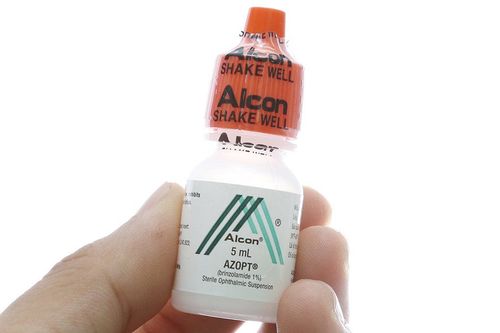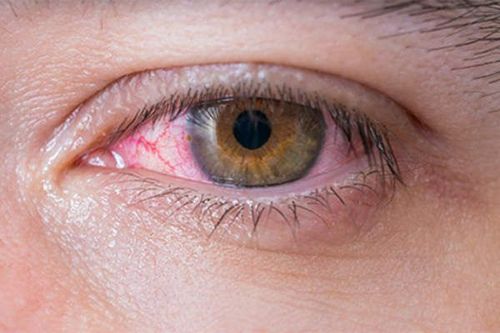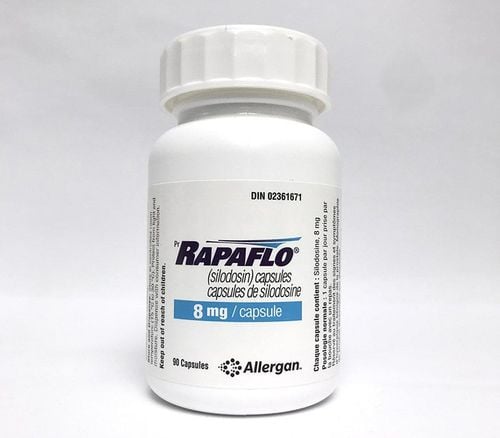This is an automatically translated article.
The article was professionally consulted by an eye doctor - Department of Examination & Internal Medicine - Vinmec Hai Phong International General HospitalIntraocular pressure measurement is a part of regular eye exams, to check intraocular pressure, increase risk of glaucoma, check treatment.
1. What is intraocular pressure measurement? An intraocular pressure measurement is a technique that measures the pressure inside your eye, known as intraocular pressure (IOP). This test is used to check if a person has glaucoma.
Glaucoma is an eye disease that can lead to blindness due to damage to the nerves at the back of the eye (optic nerve). Damage to the optic nerve can be caused by a buildup of fluid inside your eye because fluid in your eye can't drain properly.
2. Risk factors for glaucoma People over 60 Have a family history of Glaucoma You have diabetes or hypothyroidism You have another eye disease or eye injury You are severely nearsighted You have or are taking corticosteroids (anti-inflammatory drugs) for a long time.

Người bị cận thị nặng có nguy cơ cao mắc bệnh tăng nhãn áp
3. Types of tonometry 3.1 Contact ophthalmometry (Goldmann technique) This method uses a small probe that is gently pressed against your cornea to measure the pressure in your eye, which your doctor also uses. a microscope called a slit lamp to look into your eye.
3.2 Measuring intraocular pressure with electronic keratometry Electronic tonometry is being commonly used to check for glaucoma. Although very accurate, electronic tonometry results can vary from contact tonometry.
3.3 Non-contact tonometry (gas tonometry) The non-contact tonometer doesn't touch your eyes because it uses a puff of air to flatten your cornea. This is not the best method of measuring intraocular pressure and does not use numbing eye drops.
4. Procedure for performing an tonometry 4.1 Preparation for an tonometry You must remove your contact lenses prior to the test. Be loose and avoid wearing a tie that is too tight as this can increase your intraocular pressure.
Tell your doctor if you have a history of corneal ulcers, eye infections, or a history of glaucoma in your family. Tell your doctor about any medications you are taking.
4.2 Steps to perform an tonometry 4.2.1 Contact tonometry The doctor will use eye drops to numb the surface of the eye. A strip of paper containing dye (fluorescein) will be applied to the eye, or eye drops containing the dye will be used. The dye makes it easier for your doctor to see your cornea.

Người bệnh được nhỏ thuốc mắt làm gây tê bề mặt của mắt
You will rest your chin on a pad and look directly into the microscope (aka slit lamp). The doctor will sit in front of you and shine a light into your eye, gently placing the ophthalmoscope probe into your eye. Your doctor will check the pressure readings on the sphygmomanometer to confirm the intraocular pressure (IOP) of your eye.
Do not rub your eyes after 30 minutes until the anesthetic wears off.
4.2.2 Electronic flattening tonometry The doctor will use eye drops to numb the surface of the eye. You look straight ahead. The doctor will gently place the ophthalmoscope probe into your eye. Each eye will be measured several times. After the correct reading has been measured, the average IOP result will appear on the display of the device.
Do not rub your eyes after 30 minutes until the anesthetic wears off.
4.2.3 Non-contact intraocular pressure measurement This method requires numbing eye drops. You will rest your chin on a pad and look directly at the machine. A short puff of air is blown into your eyes. You will hear a puff and feel cool or a slight pressure on your eye.
5. What it means to measure tonometry IOP is measuring the pressure inside the eye, also known as intraocular pressure (IOP). This test is used to check for glaucoma. The intraocular pressure readings are as follows:
Normal: 10 - 21 millimeters of mercury (mm Hg). Abnormal: Higher than 21 mm Hg. Tonometry is a technique of measuring pressure inside the eye known as intraocular pressure (IOP). This test is used to check if a person has glaucoma. Glaucoma is an eye disease that can lead to blindness due to damage to the nerves at the back of the eye (optic nerve). Therefore, patients need to be checked for intraocular pressure when there are eye abnormalities (elderly, eyes with genetic factors - someone has glaucoma...)
Eye specialist at Vinmec has the function of caring for patients. Comprehensive vision and eye health care for children, adults and the elderly including: screening for refractive errors, laser treatment and surgery. In addition, the department also has the task of coordinating with other clinical departments in the treatment of pathological complications and eye injuries caused by accidents.
In addition, the team of Ophthalmologists at Vinmec are experienced doctors who have performed many types of surgery from routine to difficult surgeries, especially techniques that require aesthetics. With enthusiasm and love for the profession, the team of doctors working at Vinmec always gives customers the best services with the highest service quality.
Please dial HOTLINE for more information or register for an appointment HERE. Download MyVinmec app to make appointments faster and to manage your bookings easily.













